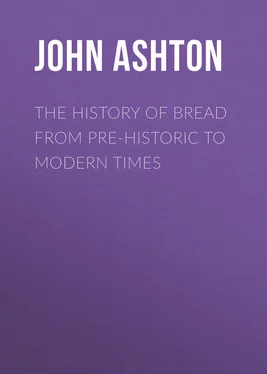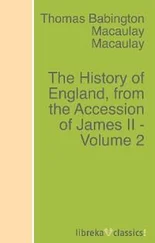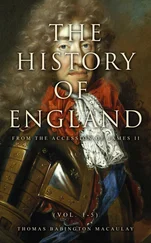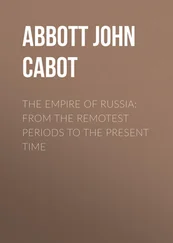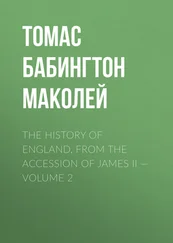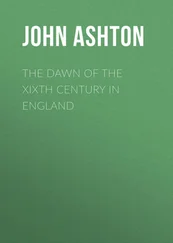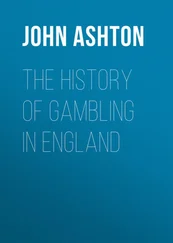John Ashton - The History of Bread From Pre-historic to Modern Times
Здесь есть возможность читать онлайн «John Ashton - The History of Bread From Pre-historic to Modern Times» — ознакомительный отрывок электронной книги совершенно бесплатно, а после прочтения отрывка купить полную версию. В некоторых случаях можно слушать аудио, скачать через торрент в формате fb2 и присутствует краткое содержание. Жанр: foreign_antique, foreign_prose, на английском языке. Описание произведения, (предисловие) а так же отзывы посетителей доступны на портале библиотеки ЛибКат.
- Название:The History of Bread From Pre-historic to Modern Times
- Автор:
- Жанр:
- Год:неизвестен
- ISBN:нет данных
- Рейтинг книги:3 / 5. Голосов: 1
-
Избранное:Добавить в избранное
- Отзывы:
-
Ваша оценка:
- 60
- 1
- 2
- 3
- 4
- 5
The History of Bread From Pre-historic to Modern Times: краткое содержание, описание и аннотация
Предлагаем к чтению аннотацию, описание, краткое содержание или предисловие (зависит от того, что написал сам автор книги «The History of Bread From Pre-historic to Modern Times»). Если вы не нашли необходимую информацию о книге — напишите в комментариях, мы постараемся отыскать её.
The History of Bread From Pre-historic to Modern Times — читать онлайн ознакомительный отрывок
Ниже представлен текст книги, разбитый по страницам. Система сохранения места последней прочитанной страницы, позволяет с удобством читать онлайн бесплатно книгу «The History of Bread From Pre-historic to Modern Times», без необходимости каждый раз заново искать на чём Вы остановились. Поставьте закладку, и сможете в любой момент перейти на страницу, на которой закончили чтение.
Интервал:
Закладка:
To sum up this notice of pre-historic bread, I may mention that at Robenhausen, Meisskomer discovered 8lbs. weight of bread, and also at Wangen has been found baked bread or cake made of crushed corn exactly similar. Of course, it has been burnt, or charred, and thus these interesting specimens have been preserved to the present day. The form of these cakes is somewhat round, and about an inch to an inch and a half thick; one small specimen, nearly perfect, is about four or five inches in diameter. The dough did not consist of meal, but of grains of corn more or less crushed. In some specimens the halves of grains of barley are plainly discernible. The under side of these cakes is sometimes flat, sometimes concave, and there appears no doubt that the mass of dough was baked by being laid on hot stones, and covered over with glowing ashes.
CHAPTER II
CORN IN EGYPT AND ASSYRIA
The ancient Egyptians had as cereals three kinds of wheat — Triticum sativa , zea and spelta ; barley, Hordeum vulgare , and doura, Holcus sorghum , specimens of which may be seen in the Egyptian Gallery at the British Museum. The so-called ‘mummy-wheat’ is a fallacy, as far as its name goes; it is the Triticum turgidum compositum , cultivated in Egypt, Abyssinia, and elsewhere.
In this fertile land the cultivation of corn was very primitive; the sower had his seed in a basket, which he held in his left hand, or suspended it either on his arm or by a strap round his neck, and he threw the seed broadcast with his right hand. According to the paintings in the tombs, he immediately followed the plough, the light earth needing no further treatment, and the harrow, in any form, was unknown. Wheat was cut in about five months after planting, and barley in about four. We have here a representation of harvesting, showing the reaping, with the length of stubble left, and its being tied up into sheaves, or rather bundles. We next see the bundles being made into pyramidal stacks.
Here it remained until it was required for threshing, and then it was transported to the threshing floor in wicker baskets, upon asses, or in rope nets borne by two men. These threshing floors were circular level plots of land, near the field, or in the vicinity of the granary; and, the floor being well swept, the ears were laid down and oxen driven over it in order to tread out the grain, which was swept up by an attendant.
And, like their modern brethren, they were merry at their work and sang songs, several of which may be seen in the sculptured tombs of Upper Egypt. Champollion gives the following, found in a tomb at Eileithyia:
‘Thresh for yourselves (twice repeated),
O oxen,
Thresh for yourselves (twice repeated);
Measures for yourselves,
Measures for your masters.’
Sometimes the cattle were bound by their horns to a piece of wood, which compelled them to move in unison, and tread the corn regularly. But it was also threshed out by manual labour, with curious implements. The next operation was to winnow the corn, which was done with wooden shovels; it was then carried to the granary in sacks, each containing a certain quantity, which was determined by wooden measures, a scribe noting down the number as called by the tellers, who superintended its removal. Herodotus (book II., 14) says that the Egyptians trod out their corn by means of swine.
Besides the growing and gathering of wheat, the doura is also represented in paintings in tombs at Thebes, Eileithyia, Beni-Hassan, and Saggára. Both it and wheat are represented as growing in the same field, but the doura is the taller of the two. It was not reaped, but was pulled up by the roots by men, and sometimes women, who struck off the earth which adhered with their hands, bound it in sheaves, and carried it to a place where it was rippled, as flax is done.
In the ordinary life of the Egyptians, the woman mealed the flour – in as primitive a form as the prehistoric man – and in the British Museum are two wooden models, which show the first process of converting the cereal into meal; and then we have two figures of men kneading dough – from the Museum at Ghizeh (formerly at Boulak). The bread itself was both leavened and unleavened – as may be seen by the many examples – round, triangular, and square – in the British Museum, some of which must have been a foot across, and over an inch thick; the three examples given on page 27 being 5in. in diameter, and 1/2in. thick; 7 ditto and 1/2 ditto; whilst the ornamented cake is 3-1/2in. in diameter and 3/4in. thick.
But there were professional bakers in Egypt, as we see in some of the tomb-pictures. In the Biblical story of Joseph we find that ‘the butler of the King of Egypt and his baker had offended their lord the King of Egypt’; and the Rabbi Solomon says their offences were the butler not having perceived a fly in Pharaoh’s cup, and the baker having got a stone into the royal bread, so that Pharaoh thought they were conspiring against his life. We know they were put in prison with Joseph, and related their dreams to him. The dream of the Opheh, or chief baker, was that he ‘had three white baskets on his head, and in the uppermost basket there was all manner of bake meats for Pharaoh.’ The Bible story of Joseph goes on to tell us how, in the years of plenty, he providentially stored up the excess of corn to meet the years of famine, and how the Israelites sent to Egypt for food, and subsequently abode in that land.
Thanks to Assyrian art, and to the enduring qualities of bronze, we are able to see how that ancient people made their bread (at least in the camp) during the reign of Shalmaneser II., son of Assur-nasir-abli, who began to govern Assyria about the year 860 B.C., and died in 825 B.C. On the bronze bands of the great gates of Balawat are recorded the warlike doings of Shalmaneser II. in detail. In almost every camp that is represented are men depicted as preparing bread against the return of the, of course, victorious soldiery: we see them mealing the corn, kneading the dough, making it into flat, round cakes, and, finally, piling these up in large heaps ready for the hungry warriors.
These gates were found in the year 1877 by Mr. Hormuzd Rassam, who, whilst excavating for the Trustees of the British Museum on the site of ancient Nineveh, began also excavations at a mound called Balawat, about 15 miles east of Mosul, and nine miles from Nimroud. Having received, as a present, before his departure for the East, some fragments of chased bronze, said to have been found in this mound, he naturally had the greatest wish to follow up the indication of a new store of antiquities. He experienced some difficulty from the villagers of Balawat, as the mound had been used by them for some years as a burial ground, and their scruples having been overcome, the result was the finding of these beautiful bronzes in fragments. They were skilfully restored at the British Museum, where they now are, and rank among the best of Assyrian antiquities.
The old Assyrians knew the value of irrigation in growing their crops, and the remains of aqueducts and hydraulic machines which remain in Babylonia bear witness to an advanced civilisation; these are constructed of masonry, which slanted up to the height of two feet, and, disposed at right angles to the river, they conducted the water from 200 to 2000 yards into the interior.
The food of the poor seems to have consisted of grain, such as wheat, or barley, moistened with water, kneaded in a bowl, rolled into cakes and baked in the hot ashes.
CHAPTER III
BREAD IN PALESTINE
Of the bread of the ancient Hebrews we know nothing, except from their sacred books; but these contain a large store of knowledge. Their cereals seem to have consisted only of wheat, barley, rye (or it may be spelt), and millet, but they cultivated leguminous plants, such as beans and lentils. It is impossible to say accurately when these books were written, so that in the following notices respecting the bread of the Hebrews I take the sequence in which I find them placed in the Bible. It is impossible to do otherwise, as their chronology is such an open question.
Читать дальшеИнтервал:
Закладка:
Похожие книги на «The History of Bread From Pre-historic to Modern Times»
Представляем Вашему вниманию похожие книги на «The History of Bread From Pre-historic to Modern Times» списком для выбора. Мы отобрали схожую по названию и смыслу литературу в надежде предоставить читателям больше вариантов отыскать новые, интересные, ещё непрочитанные произведения.
Обсуждение, отзывы о книге «The History of Bread From Pre-historic to Modern Times» и просто собственные мнения читателей. Оставьте ваши комментарии, напишите, что Вы думаете о произведении, его смысле или главных героях. Укажите что конкретно понравилось, а что нет, и почему Вы так считаете.
